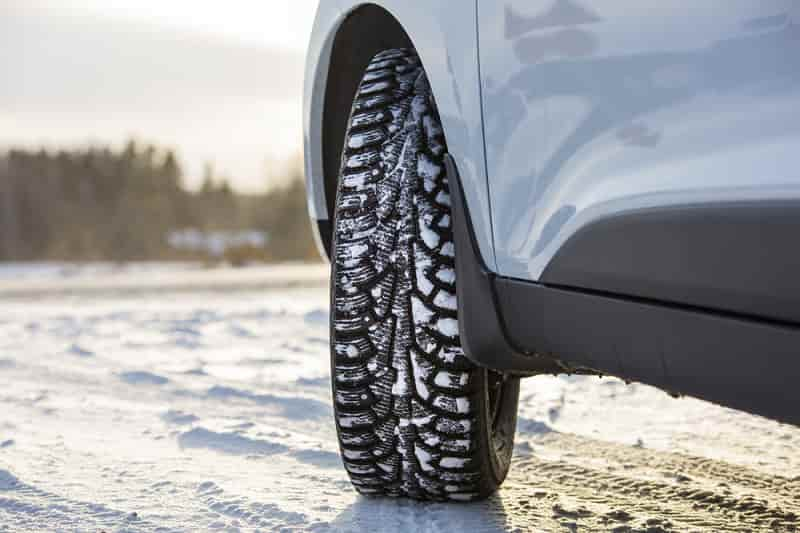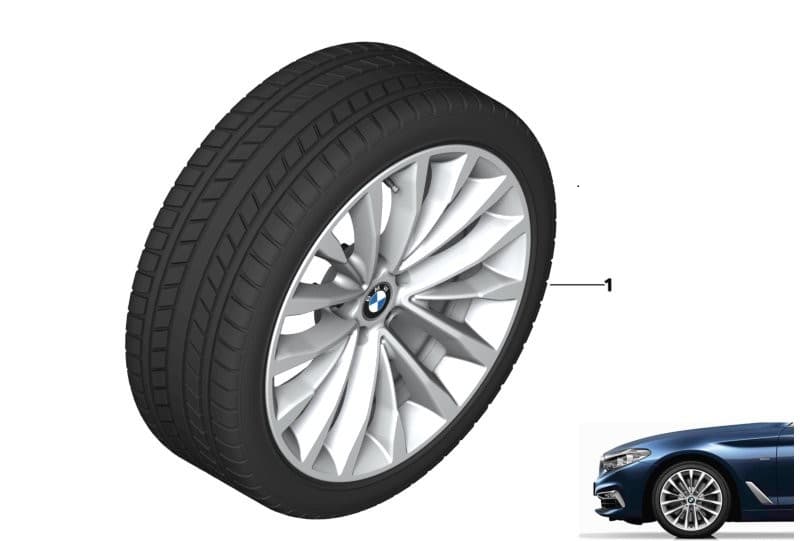Not all drivers can come with enough knowledge about the tires and their age. Winter tires with dual tread allow the vehicle to handle better in dry and cold winter road conditions than all-season tires. In addition, winter tires also have a tread design with small grooves in each tread block, increasing grip on snow or ice. So, how long do winter tires last? Let's figure it out in this article.

Contents
How long do tires usually last?
Tires are a crucial factor in the overall safety of a vehicle. It is also the only part that makes the most contact with the ground. So, tire wear is inevitable. First, worn or damaged tires will affect the vehicle's responsiveness. For example, the control, handling, steering feel, and braking of the car will not be satisfactory.
The longer you use worn tires, the higher the safety risk. It even affects the safety of other vehicles moving around you. Besides, when it is time to change tires, we still need a tire specialist to assess whether they can continue to be used.
After five years or more, we must inspect at least once a year. Any tire product will wear out. So, you need to have the knowledge and understanding to determine the wear of the tires and when the tires need to be changed.
When should winter tires be changed?
1. Tire Age
Checking the expiration date of a winter tire will help you know the remaining life of the tire. Because in some places, winter tires are only used for a few months of the year, after that, you need to change to all-season tires or summer tires. Therefore, you should only use winter tires for about 4 to 6 seasons. You can try to use it a little longer according to your driving style, road conditions, etc, but according to experts, we do not recommend it to let the tire work beyond the 10-year mark.
It is because the rubber will wear out over time because of environmental conditions. So, while the surface of the tire may still look good, there may be structural damage inside. No matter how well you maintain or store your car, 10-year-old winter tires are too old to be replaced.
If you do not remember when you bought your tires or when you bought your vehicle, you can still find out the life of your tires by searching for the model and make on the manufacturer's website or the website of an authorized dealer. You can also find the tire identification number printed on the side of the tire. The reading of this parameter will vary depending on the origin of the tire.
2. Test with a coin
Testing with a coin is a straightforward way, which has been applied by many people around the world, to help you know the wear and tear of your tires. First, you need a one-cent coin. Place the coin in the tread groove in the direction that Abe Lincoln's head is in the tread.
- If Lincoln's eyes are not visible, the tires are still in good use.
- If part of Lincoln's forehead appears, prepare to change the tire.
- If all of Lincoln's hair shows up, your tires are too worn. Change immediately to stay safe.
This test is accurate because the National Highway Traffic Safety Administration (NHTSA) says we should replace the tire when the tread height reaches 2/32 of an inch and a one-cent coin is an easy and memorable test.
3. Spike Index
Most winter tires have a tire wear index hidden in the rubber near the outer edge of the tire that is not visible. When your wheels are worn, you will notice this indicator and they also make noises to remind you to check. Do not ignore any unusual signs of the car, especially the noise.

4. Uneven Tire Surface
If you notice your tires are wearing unevenly, replace them with new ones. For example, if the tire wear indicator appears in some spots, you need new tires.
5. Visible Damage
If a nail or road debris punctures your tire, you can fix it. However, damage to the sidewall means the tire needs to be replaced. You can get in the habit of regularly visually inspecting the sidewalls of your tires for bulges, flaking, cuts, and cracks.
Swelling and flaking are signs of structural damage inside the tire. It can lead to a blowout or flaking while you are driving. Cracks, cuts, and other surface irregularities can be caused by worn-out tires or damaged by road debris. In either of these cases, the tire needs to be replaced immediately.
Conclusion
While driving, if you feel the steering wheel is unsteady, or notice strange sounds or vibrations, stop the vehicle in a safe place as quickly as possible and check both the vehicle and the tires. Check for any deformation or abnormality in the tire. And even if you do not see any abnormalities, keep driving as slowly as possible and have a tire supplier check it out for you.
When should winter car tires be changed? How long is the service life of winter tires? Although a component of the car, the tire is very important. The performance of the car also depends a lot on the tires. According to estimates by the US National Highway Traffic Safety Administration (NHTSA), there are about 200 tire-related deaths every year.
The tire can provide performance throughout its life cycle. However, after a period of use, tires will wear, distort, crack, inflate, losing traction, reducing performance when braking, and causing unsafe.
I’m Ivo Gievski, the content writer for Tireer. We built our website with over 15 years of experience and extensive research in the automotive and technology sectors. My dedication to delivering high-quality content is unwavering, and I strive to continuously hone my skills to stay ahead of industry trends and provide readers with informative, engaging, and valuable insights.